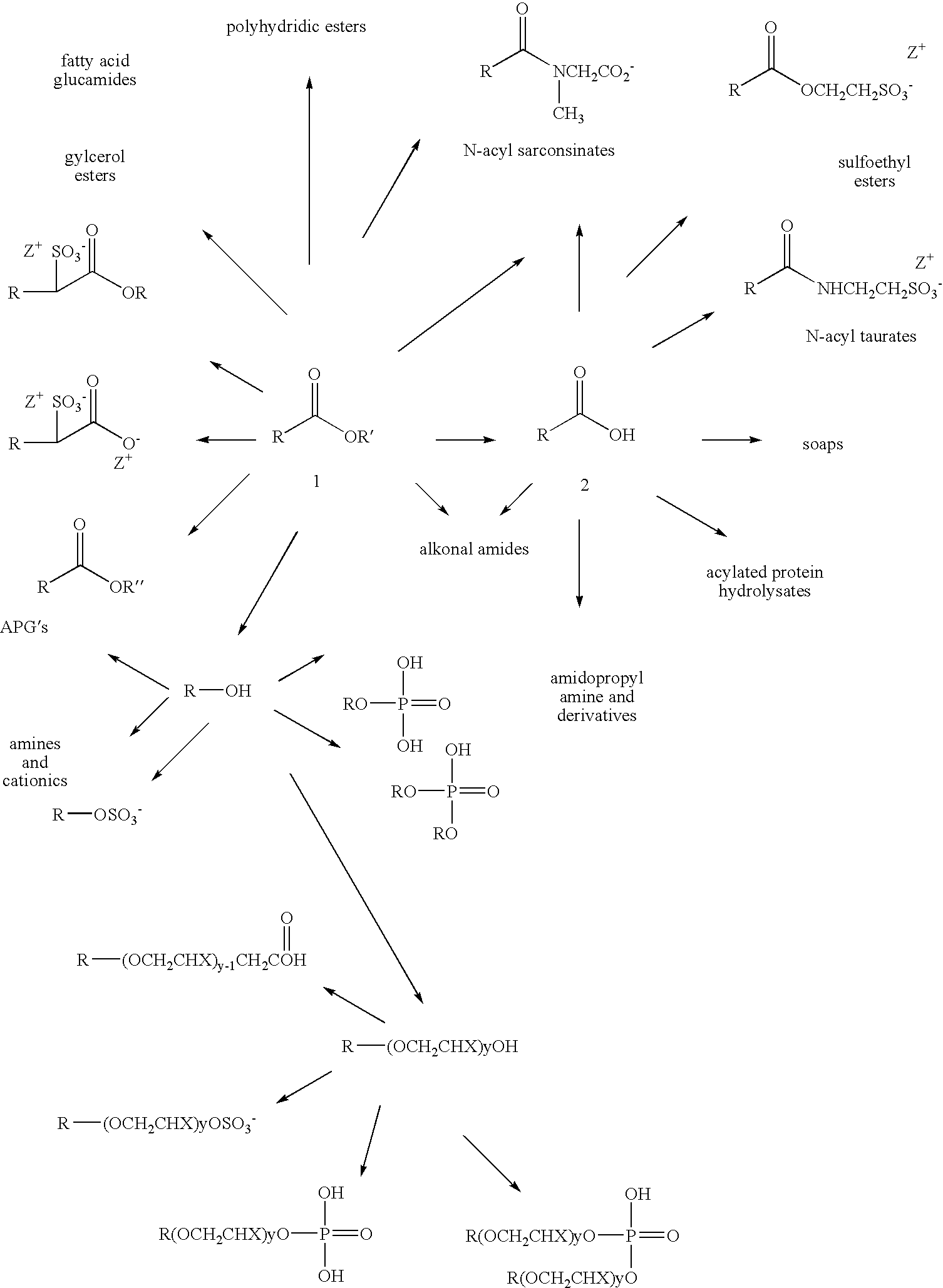Skeletal isomerization of alkyl esters and derivatives prepared therefrom
- Summary
- Abstract
- Description
- Claims
- Application Information
AI Technical Summary
Problems solved by technology
Method used
Image
Examples
example 1
Fatty Acid Ester Isomerization
[0042]Two grams of HBeta catalyst (Si / Al=25, extrudates) and 20 g of methyl oleate were loaded into a 135 ml autoclave reactor under nitrogen. After sealed, the reactor was purged with nitrogen. A nitrogen pressure of 50 psig was approached at room temperature. With an active stirring at 1000 RPM, the mixture of methyl oleate and the catalyst was heated up to 250° C. within 30 minutes and maintained for 5 h. After cooled down to room temperature within 20 minutes, the mixture was taken out of the reactor and the liquid product was separated from the solid catalyst by filtration.
[0043]NMR analysis shows that there was about 20 wt % acid formed in the product, as well as small amount of ketone and ester other than methyl ester. Methyl branching with an amount of 36.8 mol % and ethyl branching with an amount of 14.6 mol % were observed. There could be both branched methyl oleate and branched acid. Result of GC analysis is shown in Table 1.
example 2
[0044]Two grams of HBeta catalyst (Si / Al=25, powder), 20 g of methyl oleate and 2 g of H2O were loaded into a 135 ml autoclave reactor under nitrogen. After sealed, the reactor was purged with nitrogen. A nitrogen pressure of 50 psig was approached at room temperature. With an active stirring at 1000 RPM, the mixture was heated up to 250° C. within 30 minutes and maintained for 5 h. After cooled down to room temperature within 20 minutes, the mixture was taken out of the reactor and the liquid product was separated from the solid catalyst by filtration.
[0045]GC analysis (Table 1) showed higher conversion than the reaction in the absence of water. NMR analysis shows that the addition of water increased the conversion of methyl oleate, the yields of branched isomers (acid and / or ester) and free acid.
example 3
[0046]Two grams of SO4 / ZrO2, and 10 g of methyl oleate were loaded into a 135 ml autoclave reactor under nitrogen. After sealed, the reactor was purged with nitrogen. A nitrogen pressure of 50 psig was approached at room temperature. With an active stirring at 1000 RPM, the mixture of toluene, methyl oleate and the catalyst was heated up to 250° C. within 30 minutes and maintained for 8 h. After cooled down to room temperature within 20 minutes, the mixture was taken out of the reactor and the liquid product was separated from the solid catalyst by filtration.
[0047]GC analysis (Table 1) shows that the conversion of methyl oleate is about 70 wt %. The product contains 29 wt % branched ester and / or acid and about 23 wt % aryl ester and / or acid (not shown in the table).
PUM
| Property | Measurement | Unit |
|---|---|---|
| Temperature | aaaaa | aaaaa |
| Temperature | aaaaa | aaaaa |
| Percent by mass | aaaaa | aaaaa |
Abstract
Description
Claims
Application Information
 Login to View More
Login to View More - R&D
- Intellectual Property
- Life Sciences
- Materials
- Tech Scout
- Unparalleled Data Quality
- Higher Quality Content
- 60% Fewer Hallucinations
Browse by: Latest US Patents, China's latest patents, Technical Efficacy Thesaurus, Application Domain, Technology Topic, Popular Technical Reports.
© 2025 PatSnap. All rights reserved.Legal|Privacy policy|Modern Slavery Act Transparency Statement|Sitemap|About US| Contact US: help@patsnap.com

